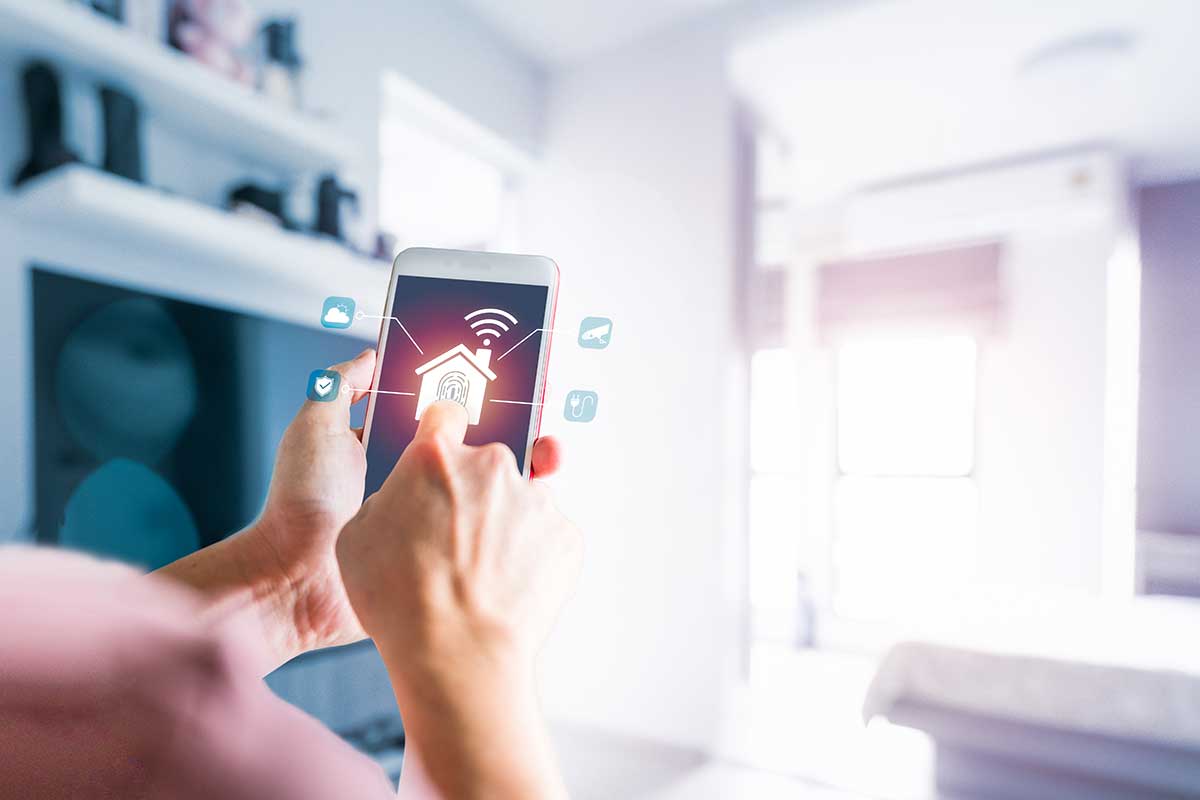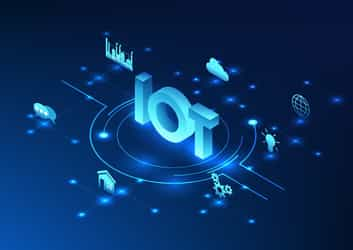
Mar 16, 2022
Blog Digital World BCC Research: Top Trending | Smart Devices
The smart device market is seeing exponential growth, with interest and demand across the globe rising. At BCC Research, we have certainly noted a sharp uptick in the number of our members downloading titles across the smart device spectrum.
Today, we’re diving into what members have been engaging with so far this year and providing an overview of our top performing smart devices reports.
What are smart devices?
Smart devices are electronic devices that can connect, interact, receive feedback and self-optimize their processes. They are designed to be both energy and time efficient, with significantly higher functionality than standard devices.
The pandemic has created several hurdles for the smart device market. These range from supply chain delays to store closures, as well as social distancing regulations and economic damage. Yet, businesses still have numerous prospects for recovery, growth and the provision of a better smart experience for consumers and end users.
Throughout the last year, BCC Research covered many topics on IoT-driven technologies and devices. In our latest report, our analysts break down four of our most popular topics, which we will provide an overview of below:
Now that we know what our topics are, let’s get reading!
Smart Devices | Smart Grids
Smart grids are widely regarded as the next generation power grid. They use sensors to gather data about energy usage and requirements of end users and are less expensive, more consistent, sustainable and secure than existing power grids.
In fact, most countries around the globe are facing predominant power losses and have concerns regarding the resilience of their existing electric transmission and distribution infrastructure. As a result, many countries are now making significant investments in research and collaboration with key players in the smart grid industry. The aim is to deploy infrastructure to modernize their current grid systems.
The smart grid market is likely to experience a significant boom throughout the forecast period (2021-2026) as research and development towards grid digitalization continues to pick up pace.
Benefits of a smart grid infrastructure
The key advantage of a smart grid infrastructure lies in the ability to incorporate renewable energy sources in the current electricity grid. This enables the creation of a hybrid grid, while supporting the rising requirement for energy protection. Government initiatives aimed at sustainable energy production that require dependable power infrastructure are promising, and there are some key players in the smart grid market investing in technology as a response to increasing demand for energy management and automation.
As rapid growth in urbanization and industrialization continues throughout emerging economies, there is expected to be increased investments in smart grids across the globe. Crucially, smart grid technology is now being increasingly viewed as a strategic infrastructural investment that will facilitate long-term economic prosperity, while maximizing profits and conserving power.
As the grid becomes smarter, so do the cities we live in, leading to a better quality of life for citizens. By improving the intelligence of the grid infrastructure, we give citizens the power to manage their utility usage and the technology or service they collaborate with.
Smart grids will help countries reach their carbon reduction and renewable energy goals, develop economic efficiency and increase power distribution across the globe. The adoption of smart city technology by various countries and governments will also lead to the deployment of smart grids, which will be an enormous boom to the smart grid market.
Smart Devices | Smart Transducers
A smart transducer is a device that converts energy from one form to another. This is often done via a signal in one form of energy to a signal in another form of energy. These devices consist of a sensor and/or actuator element, a microcontroller, a communication controller and software for signal conditioning, calibration, diagnostics and communication.
The basic requirements of a transducer include:
The predominant advantages of smart transducers include low cost, ease of use and electronic data storage.
With the adoption of the IEE standard, the use of smart transducers has significantly increased across various industries, including the medical industry, where control is being decentralized to the transducing site. Many smart transducer systems are designed for mass-market applications where low manufacturing costs are essential.
What’s driving the smart transducer market?
Despite the global recession, caused by the pandemic and ensuing lockdowns, the smart transducer market received a boost. This was largely due to increased demand from the healthcare and biomedical industries, as well as the telecommunications and consumer electronic industries.
The disruption to the supply chain in China, following the closure of factories and the reduction in the workforce, impacted most global makers of consumer electronics devices. Almost 50% of the world’s LCD panels for televisions, notebooks and monitors are made in China and many LCD factories have been closed. This has resulted in tighter inventories of supplies, higher prices and an inevitable drop in shipments of end devices. However, on a positive note, the use of smart speakers and smart displays with voice and video calling capabilities are increasing, which is leading to growth in the smart transducer market.
This increased demand from manufacturers in the consumer electric devices market will provide ample opportunity for the smart transducers market to ramp up production, while lowering costs. What’s more, across all industries there is increased demand for micro-electro-mechanical systems (MEMs) that is leading to continuous innovation across the smart transducers field. This includes the growing adoption of smart transducers across the Industrial Internet of Things (IIoT) sector.
Smart Devices | Smart Speaker
Smart speakers are wireless devices with an integrated virtual assistant that offers interactive actions and hands-free activation. It is an internet-enabled speaker controlled by spoken commands and is capable of streaming audio content, relaying information and communicating with other devices.
Big players in the smart speaker space include Amazon Echo and Google Home. These devices, paired with intelligent personal assistants, Alexa and Google Assistant, carry out commands, search the web and control other smart devices.
What are some main driving forces behind smart speaker industry growth?
The smart speaker market is projected to experience a significant global boom leading up to 2025, and factors such as an increased demand for artificial intelligence (AI) powered and Internet of Things (IoT) enabled smart home devices and the growing trend of display-equipped smart speakers, alongside rising per capita income are encouraging growth across the market.
The advent of AI and IoT has led to many technological innovations and indeed, challenges that have impacted the smart speaker market. Several companies have seen the potential of the successful adoption of smart home technologies and there is mounting evidence that shows traditional consumer home devices are now being replaced by smart devices.
AI-powered smart speakers, such as Google Assistant and Amazon Alexa, can lead to tremendous investment due to their wide use cases across the home. For example, the ability to control lights, fans, security cameras and televisions, among others. The ability of smart speakers to smoothly integrate with home devices significantly boosts smart speaker market growth.
In addition, the increasing popularity of voice commerce among end users is providing further opportunity for growth. The increase in usage of Alexa, Siri and Google gave a push to voice commerce in 2020, enabling end users to buy products online. This growing popularity of voice ecommerce will lend itself to the smart speaker market, making it one of the key trends fueling market growth. However, data privacy and security concerns remain a major hurdle for market growth.
Smart Devices | Smart Display
A smart display is a device that connects wirelessly and can interact with end users and other connected devices, requiring little or no keyboard activity. Due to the increased proliferation and penetration of smartphones, the facilitation of smart home technology is driving enormous interest across the smart display spectrum.
Like smart speakers, smart displays also benefit users of Google Assistant and Amazon Alexa. In fact, manufacturers are now creating streamlined strategies for controlling different devices with voice command. As a result, not only will AI assistants become more prevalent across several new applications, but smart displays will also see considerable investment in the coming years.
What are some main driving forces behind smart speaker industry growth?
The global market for smart displays is being driven by the intense focus of industry participants who are pushing solutions across the mainstream market. Some advances in technology and a reduction in device prices are likely to result in the market growing at a healthy rate in the coming years.
Until recently, the smart display market was considered an elite market, but is now witnessing growing popularity across widespread social segments. Indeed, the utilization of liquid crystals, OLEDs and other emerging processes have dropped the unit prices of smart display devices considerably, thus paving the way for their penetration across several fields, including:
In particular, wearable displays are currently experiencing very strong growth.
What’s more, the growing penetration of the Internet of Things (IoT) is leading to a digital transformation of the home. In the coming years, AI assistants and smart home technologies will fuel the need for smart displays further across smart homes.
Growing demand for connected vehicles is also a factor expected to fuel the smart display market in the near future. The demand for improved vehicle safety, convenience and comfort is increasing dramatically, thus accelerating market development. However, the development of this is constrained by the high cost of smart displays and their vulnerability to cyber intrusion.
Trending at BCC Research | Join Us!
We hope you enjoyed our inaugural deep dive into what is trending across the BCC Research Members download list. Moving forward, we are aiming to bring you this type of content each month, so you can get a comprehensive overview of what’s trending, where key investments are being made and how markets are growing globally.
If you don’t want to wait that long, why not consider membership today? Click here to get started.

From smartphones to satellites, antennas play a vital role in enabling the seaml...

Introduction Artificial Intelligence (AI) and the Internet of Things (IoT) are r...

We are your trusted research partner, providing actionable insights and custom consulting across life sciences, advanced materials, and technology. Allow BCC Research to nurture your smartest business decisions today, tomorrow, and beyond.
Contact UsBCC Research provides objective, unbiased measurement and assessment of market opportunities with detailed market research reports. Our experienced industry analysts assess growth opportunities, market sizing, technologies, applications, supply chains and companies with the singular goal of helping you make informed business decisions, free of noise and hype.